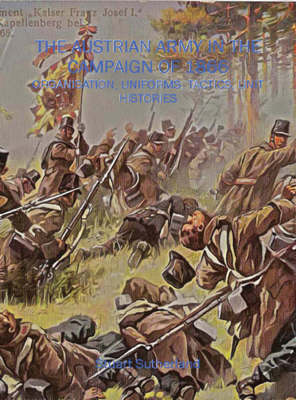In the spring of 1866 relations between the Austrian Empire and the kingdom of Prussia reached a crisis. The two nations were locked in a battle for the leadership of Germany and, ultimately, for the leadership in central Europe. Through the astute diplomacy of the Prussian minister-president, Otto von Bismarck, the Prussians concluded an alliance with the newly created kingdom of Italy, which hungered for Austrian lands peopled by Italians. Matters between the three nations went from bad to worse until 14 June 1866, when Prussia declared war on Austria; Italy followed six days later. The ensuing campaign resulted in Austria's total defeat at the hands of the Prussians, the culmination being the decisive victory K niggr tz in Bohemia, 3 July. Although the Austrians had defeated the Italians at Custozza in Venetia on 24 June and in the naval action of 20 July at Lissa, by the terms of a prewar arrangement with Emperor Napoleon III of France, Venetia was ceded to Italy. Austria withdrew from participation in German affairs and as a result became more concerned with the Balkans, an involvement which led to the destruction of the Empire in 1918.The Austrian army of the 1866 campaign is one of those forces maligned for not being able to keep up with the times. The explanations for its shattering defeat at the hands of the Prussians include poor administration and staff work, incompetent generals, outmoded tactics, obsolete weapons and the polyglot of nationalities present in the army. All were relevant, yet it is ironic that it is rarely mentioned that very few anticipated the deadly efficiency of the Prussian army and that the Austrians were doubly unfortunate in encountering the most impressive military machine of the 19th century with their difficulties. Their bad luck was not lost on French commentators five years later when they sought to explain their own defeat at the hands of Prussia and its allies. More to their credit, however, Austrian forces met and beat much larger Italian formations on several occasions and held their own in the southern theater, where weapons, tactics and generals were more in keeping with the run of 19th-century experience. Too often, however, the army's good performance has been lost because political reasons most often dictate the assessments of the campaign.
This major new study describes in detail the organization, regiments, uniforms, tactics, and commanders of this army. The organization of the army as a whole, and its individual branches, is described, in addition to extensive orders of battle, and thumbnail campaign histories for virtually all regiments and individual battalions. The tactics employed by the infantry, cavalry and artillery during the campaign are examined in detail, with specific examples from battles fought during 1866. The army's uniforms, weapons and flags are also analyzed, with much information on how the soldiers actually looked on campaign (at times, in marked distinction to the full dress regulations). Finally, a large number of biographies of commanders are provided, ranging from the better-known Benedek and Archduke Albert to lesser figures including a number of infantry brigadiers, alongside gunners and cavalry officers.
The author has utilized a wide range of sources, drawing heavily on regimental histories and other scarce German language material, meaning that virtually all the content will be new to English readers. The work features eight pages of newly commissioned color uniform plates, along with a number of other black-and-white illustrations, and tactical diagrams.
Produced in a limited-edition hardback printing of 1,000 copies (all individually numbered and signed by the author), this book is profusely illustrated with eight pages of newly commissioned color uniform plates, along with a number of other black-and-white illustrations, and tactical diagrams.
- ISBN10 1906033102
- ISBN13 9781906033101
- Publish Date 15 March 2012
- Publish Status Unknown
- Out of Print 24 November 2016
- Publish Country GB
- Imprint Helion & Company
- Format Hardcover
- Pages 248
- Language English
